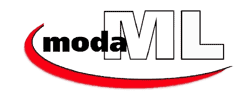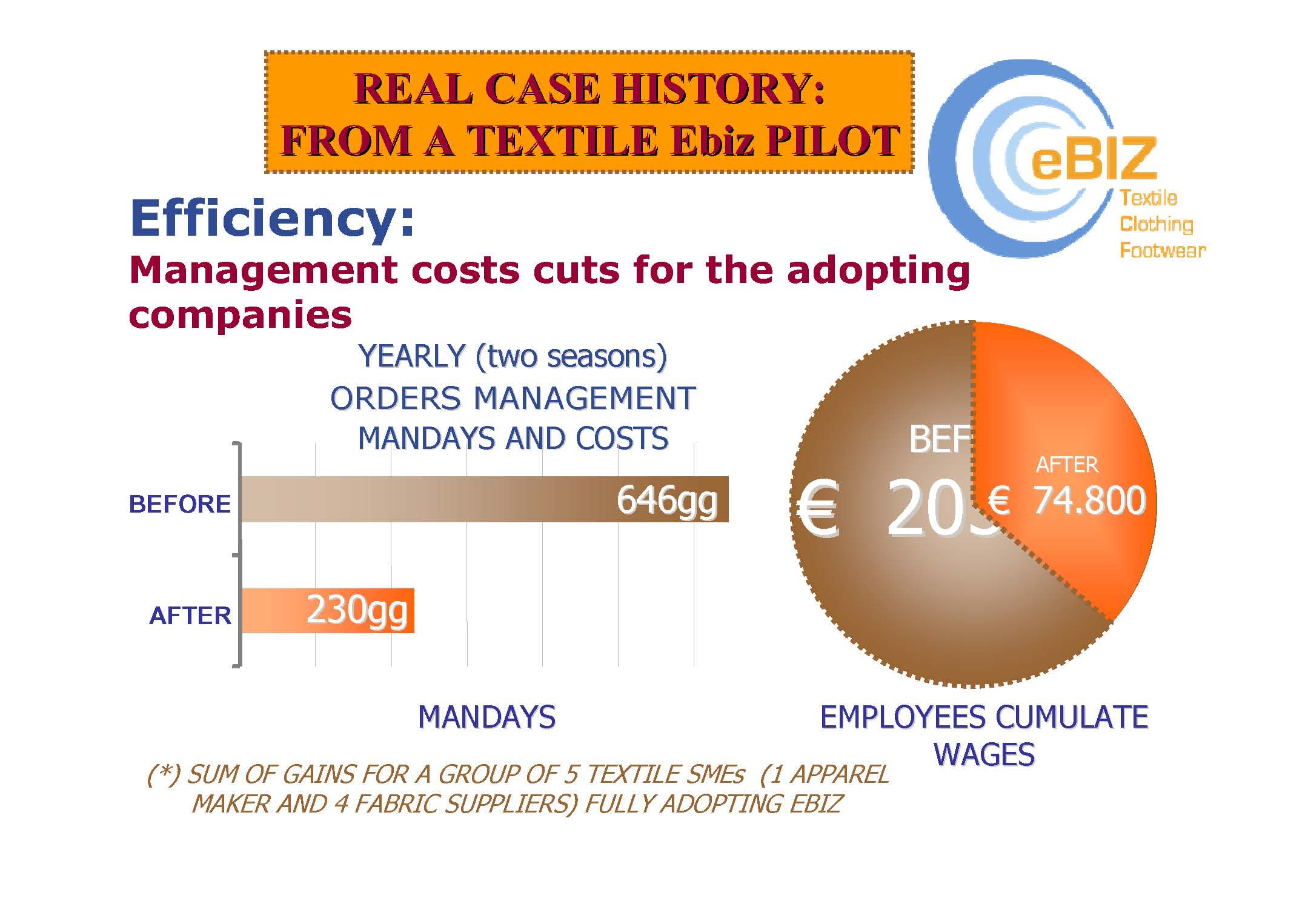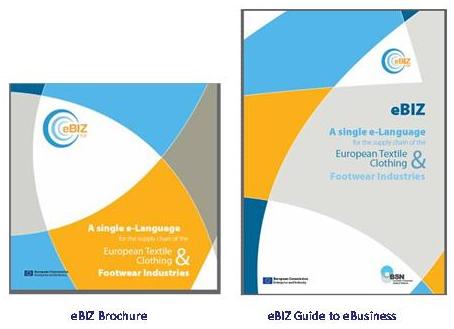Inter-company integration via Internet, why?
-
The competitiveness depends upon the performances of the whole supply chain.
-
The Textile/Clothing supply chain is long, fragmented, heterogeneus and continuously evolving.
-
The flexibility and timeliness of the supply chain are decisive.
-
SMEs add high specialisation and productive flexibility to the system.
But the flow of data are hampered by the inter-company interfaces and by the difficulties for the organisations to manage ICT technologies.
A pubblic, standard format to exchange data, why?
-
Every firm has relationships with many partners and building and manage a different interface towards each of them is unfeasible (or extremely costly)
-
A common standard simplifies the relationships with international partners
-
The adoption of a common non-proprietary interface saves costs and avoids to be constrained to a specific supplier.
Samples of the benefits of a better integration:
-
The data of the purchase orders are available on digital systems without manual inputing (ad drastically reducing errors).
-
The fabric supplier receives collection booking notes from the clothing manufacturers and can improve its production planning.
-
The clothing manufacturer receives the order status report from the fabric supplier, can improve its planning and receives a digital defects map, ready for his machinery.
-
The sell-out data flow back along the supply chain.
|
|


![[PREVIOUS]](/moda-ml/images/but_previous.gif)
![[PRINT]](/moda-ml/images/but_print.gif)
![[PREVIOUS]](/moda-ml/images/but_previous.gif)
![[PRINT]](/moda-ml/images/but_print.gif)













